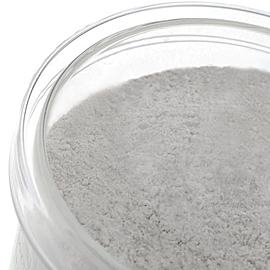Wheat starch

Description:
Starch is a carbohydrate cosisting of a large number of glucose units joined together by glucosidic bonds. This polysaccharide is produced by all green plants as an energy store. The basic chemical formule of the starch is (C6H10O5)n, it consist of two types of molecules: the linear and helical amylose (contains 1,4 - alpha glucosidic bonds) and the branched amylopectin (contains1,4 – alpha glucosidic bonds as well as 1,6 – alpha glucosidic bonds). Wheat starch is insoluble in cold water or alcohol and contains 30% amylose and 70% amylopectin. Wheat starch is composed of three classes of granule fractions with diameter varying from small (< 1 μm) to medium (4-7 μm) till large (> 15 μm).
Organoleptic properties:
White powder, neutral smell and taste.
Application:
Food industry:
Ready to use flours, mixtures for bakeries, cakes and cookies. Glucose and confectionary industry. Sausages, canned meat and other meat products as binding agent for water and fat. In soups, sauces and salad dressings as a binding agent and to obtain a smooth, creamy structure of the end product. Infant food, spread, preserves, dry spice mixes and snacks as a binding agent. Dairy products (e.g. pudding, custard). Beer, as a source of carbohydrate for fermentation. Fermentation, as a medium. In meat industry it is used as a texturizer, absorbent of water (1:2), meat replacer. It is added up to 4% of mass in the recipes. The starch is added at the end of cuttering at 10°C.
Pharmaceutical industry, Paper and cardboard industry, Textile industry, Chemical industry, Industry building materials and many more.
Packaging and labeling:
Paper bags 25 kg, Big bags 1000 kg, bulk
